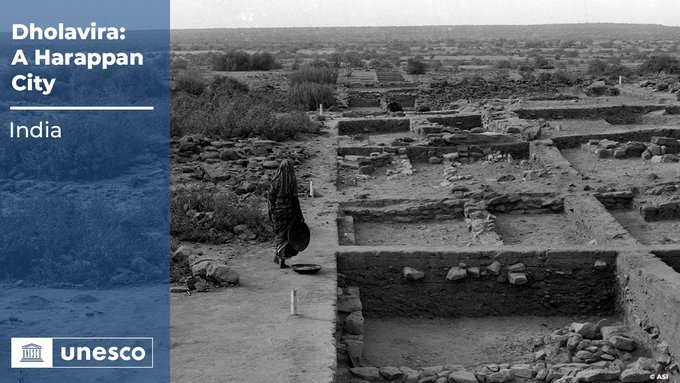Dholavira, Harappan-era city, in Gujarat inscribed on UNESCO World Heritage list
New Delhi: Two landmark decisions were taken during the 44th session of the UNESCO World Heritage Committee in Fuzhou, China, with the inscriptions of the Kakatiya Rudreshwara (Ramappa) Temple, Telangana and Dholavira: A Harrapan City, Gujarat on the UNESCO World Heritage List.
Kakatiya Rudreshwara (Ramappa) Temple received its inscription as a World Heritage Site on 25 July and Dholavira: A Harrapan City was inscribed on the World Heritage List today, XX July, bringing India’s number of World Heritage sites to 40. The ancient city of Dholavira is one of the most remarkable and well-preserved urban settlements in South Asia dating from the 3rd to mid-2nd millennium BCE (Before Common Era). Discovered in 1968, the site is set apart by its unique characteristics, such as its water management system, multi-layered defensive mechanisms, extensive use of stone in construction and special burial structures. Of note is also the art associated with the city – artefacts of various kinds such as copper, shell, stone, jewellery of semi-precious stones, terracotta, gold, ivory have been found at the site. In addition, the interregional trade links associated with Dholavira, have also been acknowledged as contributing to the shared heritage of humanity.
The two newly inscribed World Heritage Sites offer great insight into the knowledge and ways of life of earlier societies, customs, and communities.
UNESCO seeks to encourage the identification, protection, and preservation of cultural and natural heritage around the world considered to be of outstanding value to humanity. This is embodied in an international treaty called the Convention concerning the Protection of the World Cultural and Natural Heritage, adopted by UNESCO in 1972.
Kakatiya Rudreshwara (Ramappa) Temple, Telangana
Popularly known as the Ramappa Temple, Rudreshwara is located in the village of Palampet in Telangana. It is the main Shiva temple in a walled complex built during the Kakatiyan period (1123–1323 CE). The distinctive Vimana of the temple is made of lightweight porous ‘floating bricks,’ which reduced the weight of the roof structures. The building features decorated beams and the temple’s magnificent sculptures illustrate regional dance customs and Kakatiyan culture. The site is located close to the Ramappa Cheruvu, a Kakatiya-built water reservoir, placing it in a unique natural setting of the surrounding forested areas and agricultural lands.

